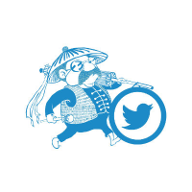









20 October 2016 by Suyen Hu
Some days ago, a friend of mine in Canada shared a post online asking about how to help her little one share the ideas of the Buddhist 18 layers of Hell in his class at school. The sharing must be in simple English for Western kids.
One of the comments under the post said: ‘Ask Snowflake to help.’ It is interesting that for some friends, they don’t call me Su Yen, but like to call me Snowflake, or Xuehua in Chinese. I love being called Snowflake actually!
That morning, when I met another Snowflaker, I talked about our Buddhist 18 layers of Hell. I said:
‘Many Taiwanese people believe that when people die, they have to go to see the God of the Underworld. The God will look through the person’s life and judge whether this person should go to heaven, or be reborn or stay in the 18 layers of Hell. Do you think it’s crazy to punish bad people with so many different layers? For example, if a person was a gambler he/she would be punished in the Layer of Iceberg, and a person who killed people would be sent to Knife Mountain to be cut into pieces.’
Then we started to discuss about the Western and Eastern ideas of Hell. In Mediaeval times, Christians used to believe in Purgatory which was the place dead people should go to and be judged if they could go to Heaven or Hell. Rich families would pay churches to pray for the dead people so they didn’t have to stay too long in Purgatory and could go to Heaven quickly. But now people don’t believe in Purgatory anymore as they argue that it’s not right that people can pay for going to Heaven!
In Buddhist and Taoist belief (in Taiwan, our belief is a mixture of Buddhism and Taoism), the thing similar to the Christian idea is that Taoists believe if they burn a lot of Paper Money (specially designed and made for underworld) and pay monks to pray for the dead, so the dead could leave the 18 layers of Hell and be reborn or go to Heaven. The different thing is, there are still a lot of people in Taiwan who believe in this idea, so perhaps we are like modern people living with Mediaeval minds. And that’s why we still have temples everywhere, and are building more and more grand temples even now.
As Buddhism or Chinese culture often are alien for Westerners, it is important that we only pick up the main information and use simple English to explain the deep cultural ideas. This is what we have been doing for five years. We hope to make a bridge between Eastern and Western worlds and reduce the barrier.
I shared our conversations about Hell with my friend in Canada and hope she would find it easier to talk about the topic with her kid so he could share the 18 layers of Hell with the whole class with confidence.
However, kids who are educated in the Western world think independently. I was excited but also nervous to know his reaction toward my short introduction about the Buddhist Hell.
It was such a great pleasure when I heard he thought my introduction was a good start for him to learn and talk about Hell. He made his own notes and picked up the information he liked to share with his class.

My friend said the boy was very curious about the different layers, he wanted to know how tall the Knife Mountain and the Iceberg are; maybe he wanted to measure how long the people would be punished. He also wondered what would happen if the dead didn’t want to climb up the terrifying mountain to be tortured; then he found out that there were ghost soldiers holding knives to force and push the dead to climb. For the Mill layer of Hell, the little boy thought the dead would be ground and ‘turned into juice’ if they were thieves.
Source of the picture: 香港佛教聯合會
After school, the little boy told his mom, my friend, that the teacher seemed to like his sharing very much and said she learnt a lot from his sharing. The teacher even wanted to keep the little boy’s notes of the topic; perhaps she found the 18 layers of Hell interesting and would like to know more. He was very happy after the presentation! I was very happy too!
It’s such a gratifying feeling that we can get direct feedback from kids when we think we are making attractive picture books using simple English but with deep cultural concepts for them. Kids often don’t lie, if they don’t like the ideas, or if they don’t like the books, they argue with their parents or they refuse to read the books. It then has been the greatest challenge in my life to turn ‘educational materials’ into something beautiful and lovable for children in the world.